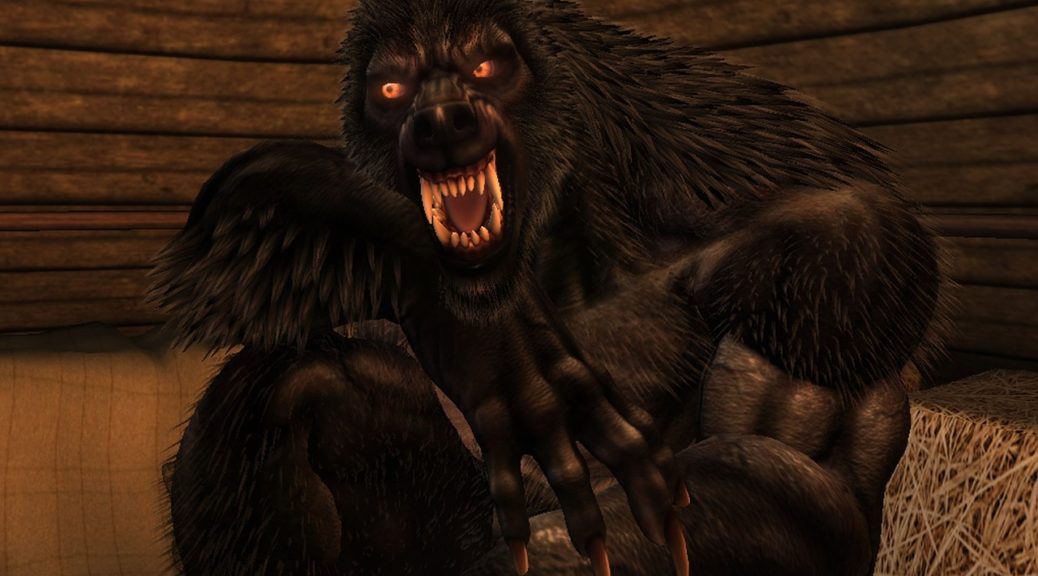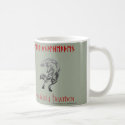
The Werewolf in the Viking Age (Halloween Special)
I thought I’d do a piece about werewolves since Halloween and Winternights is coming up. Yeah, even though I’m not particularly fond of the whole Halloween thing, I get that a lot of people are into Halloween, which means I should at least write something related to it.
Nowadays shifters and werewolves have become popular in modern culture. Ever since Lon Chaney Jr. donned makeup and a mask, werewolves have been popular on the silver screen. More recently, we see the werewolves in urban and paranormal fantasy and romance as sort of cuddly and dangerous wild creatures. Our ancestors would probably think we’re crazy for loving the wolf, which is why I’d love to talk about wolves and werewolves.
Wolves in Norse Mythology
If you look at Norse and Germanic mythology, you’ll see plenty of wolves in the stories. Odin is accompanied by two wolves, Geri and Freki. Loki’s first wife, Angrboða, bore Fenrir the wolf of Ragnarok, as well as Hel and Jörmungandr. Two wolves, Sköll and Hati Hróðvitnisson, chase the sun and moon respectively.
With the exception of Odin’s wolves, most wolves in our mythology have a negative connotation. Odin’s wolves may be a testament to Odin’s often unpredictable and wild side that can cause harm. Fenrir will swallow Odin. The wolves that chase the sun and moon are are destined to swallow our sun and moon during Ragnarok. In other words, our myths tell us that wolves are to be feared. But why is that?
What Our Ancestors Thought of Wolves
Wolves were considered dangerous creatures that inhabited the wilderness. People heard them howl outside of the safe confines of their village, which protected them against the dangers that lurked beyond their fences or walls. When criminals were sentenced, they typically were exiled from the village or town. These people were called vargr, yes, wolves, and they could be hunted and killed on sight without penalty. These people had to learn how to survive in the wilderness or go to another place that hadn’t heard of them yet. They were considered the lowest of the low and assuming they survived, they might join other bands of criminals that preyed upon travelers.
So, the wolf was a feared animal to our ancestors and those exiled criminals were considered like wolves.
What About Werewolves?
In the Saga of the Volsungs there’s a story how a father and son, Sigmund and Sinfjotli, probably vargr, come upon two men in an enchanted sleep who have magic wolf pelts. The father and son steal them and put them on, becoming wolves. The pelts transform people into wolves for ten days. The new wolves go on a killing spree, which ends when the father attacks the son, causing a mortal wound. Only through the aid of a sympathetic raven does the son become healed and the two remove their wolf pelts and burn them on the tenth day.
Ulfhednar Berserkers
Yeah, yeah, berserkers are a different type of warrior based on a bear, I know. Deal with it. Anyway, ulfhednar were a type of berserker that instead of using the strength of the bear, used the powers of the wolf in their fighting. These warriors would wear wolf skins and were believed to be Odin’s warriors. They didn’t wear mail and didn’t appear harmed by fire or metal. They would howl and bite their shields, no doubt terrifying their enemies.
Where Did Our Halloween Werewolves Come From?
There’s little doubt that the modern day werewolves we associate with Halloween came from Eastern Europe. But there’s an excellent chance that those people got their legends from both the ulfhednar and the fear of the vargr. After all, Eastern Europeans mingled with Northern Europeans quite often and the Rus had their origins with the Vikings. But then again, most cultures seem to have shape shifting and wolf legends. It may have come from earlier days when humans huddled around their campfires and heard those howls coming from just outside the safety of the light.
—
Disclaimer: This post contains affiliate links. If you purchase something from these links, I get a small stipend which helps support The Rational Heathen. I would encourage you to support my site. Thanks.





One thought on “The Werewolf in the Viking Age (Halloween Special)”
nice post – one actually shows up in the Brotherhood of the dragon
The werewolf turned out to be Sebastian Vulk, a Norwegian Úlfheðinn who had been driven out of his homeland because the nation suffered a sudden bout of Christianity. The Úlfheðinn were berserkers, one of Odin’s wolf dressed warriors.
“Are you saying Odin was real as well?” Doyle asked.
Exasperated at the interruption of my tale I snapped, “No. I am saying in Norse mythology the Úlfheðinn were associated with Odin. Now may I continue?”
“Please, by all means,” Stoker said, silencing any further questions his cousin may have been about to ask with a stern look and a gentle kick to the shin.
“Vulk had been in the Highlands for years, and yes his presence and occasional sightings created not only the mythology of the Cù Sìth, but also another black-dog legend from Wales, the Gwyllgi. Unlike the legend though, Vulk does not entirely become an animal when he transforms into a lycanthrope…”
“…another name for werewolf, right?” Doyle asked.
https://www.amazon.com.au/Brotherhood-Dragon-Phil-Hore/dp/1925652602